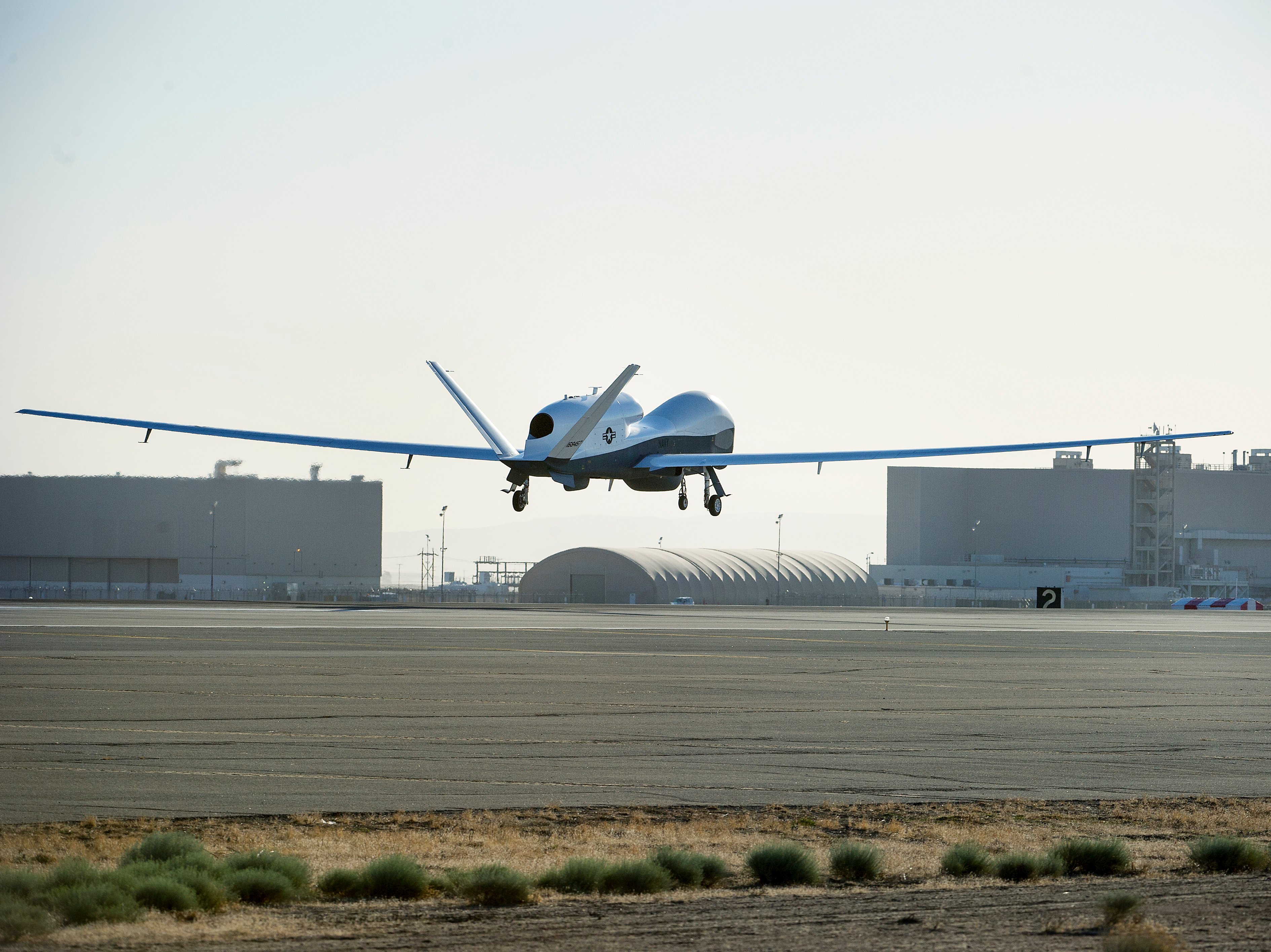
The Navy will operate its East Coast MQ-4C Triton unmanned aerial vehicles at Naval Station Mayport, Fla., U.S. Fleet Forces Command announced today.
The service had already announced that personnel running Triton missions would operate out of Naval Air Station Jacksonville, Fla., but the unmanned systems use a “remote split” operational concept where mission crews do not need to be collocated with the air vehicles and maintenance personnel.
The decision regarding where to locate the air vehicles and maintenance crews had been awaiting the results of an environmental assessment looking at the impact of establishing support facilities at three locations: Mayport; NAS Key West, Fla.; and National Aeronautics and Space Administration (NASA) Wallops Flight Facility on the Eastern Shore of Virginia. The assessments all came back with no significant impact at any of the three sites, so “the Navy’s decision was based primarily on its operational needs and its responsibility as a steward of taxpayer resources,” according to a Navy news release.
“Located in a fleet concentration area, NS Mayport provides the most operational, maintenance, and family support for the least cost within its existing Navy facilities and services,” the release adds.
Under the “remote split” operational model, the mission crew at Jacksonville will be considered the Main Operating Base (MOB), while the maintenance personnel at Mayport will be the Forward Operating Base (FOB). This construct allows the mission crew in the first Triton squadron – Unmanned Patrol Squadron (VUP) 19, which stood up in October 2016 – to be collocated with P-8A Poseidon crews. Tritons and Poseidons will operate alongside each other in one of the Navy’s strongest examples so far of manned/unmanned teaming.
Meanwhile, at Mayport, about 400 Triton personnel will work on the vehicles while at home and rotationally deploy when the air vehicles are operating forward. The mission crews would not need to leave Florida, as they can operate the air vehicles remotely.
Construction at Mayport is set to begin later this year to support the first UAVs arriving in 2020, according to the news release. The facility would be large enough to base four air vehicles and support maintenance on an additional four if needed.
The Navy has previously announced that the next Triton squadron would be located at NAS Whidbey Island, Wash.
The Triton air vehicle is 48 feet long with a wingspan of 131 feet, and it provides maritime intelligence, surveillance, and reconnaissance (ISR) data collection to the fleet and directly to its manned Poseidon counterparts.





